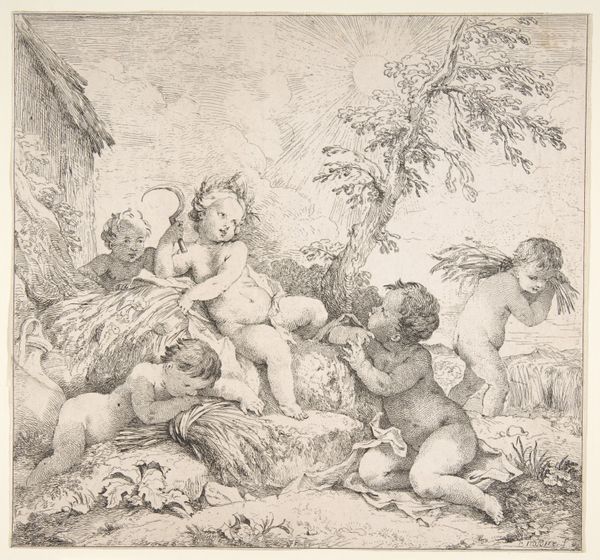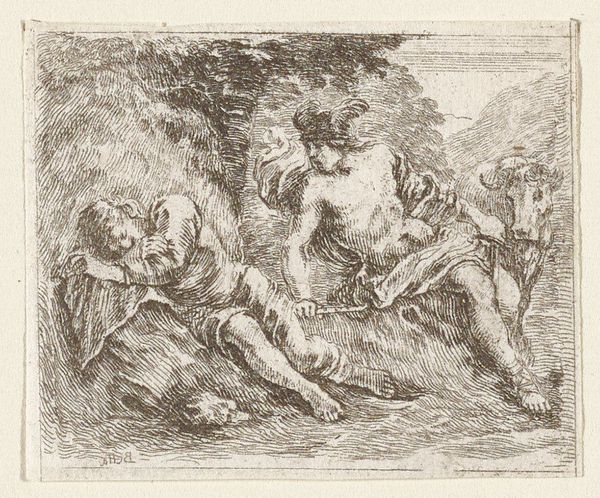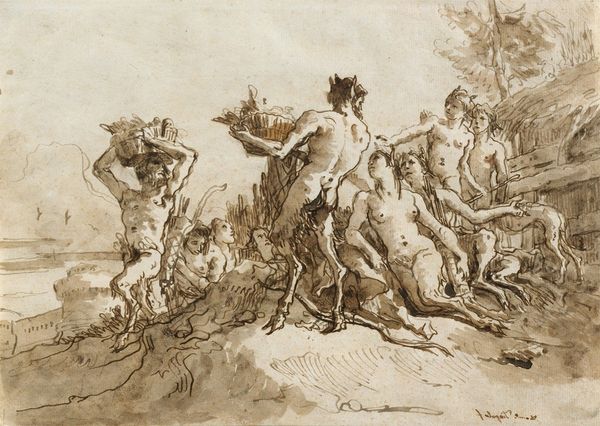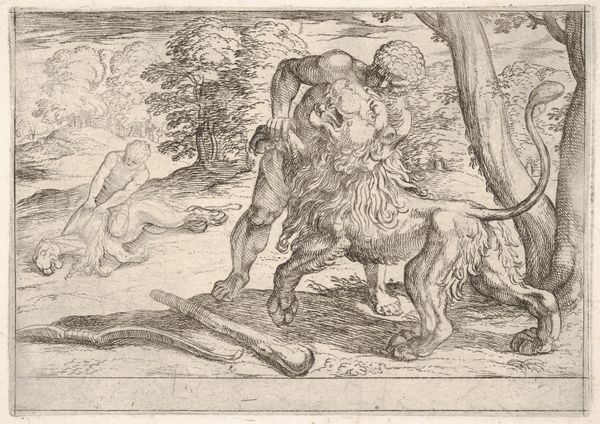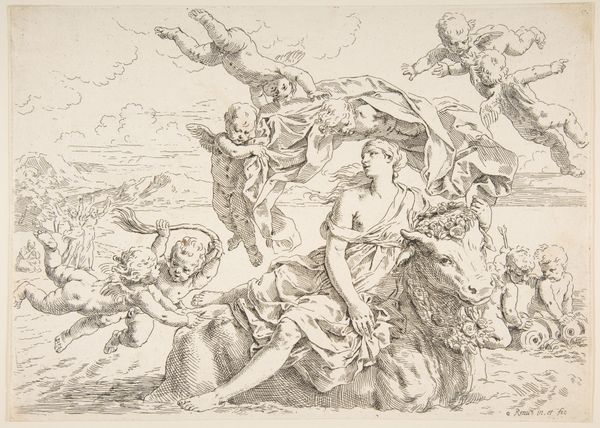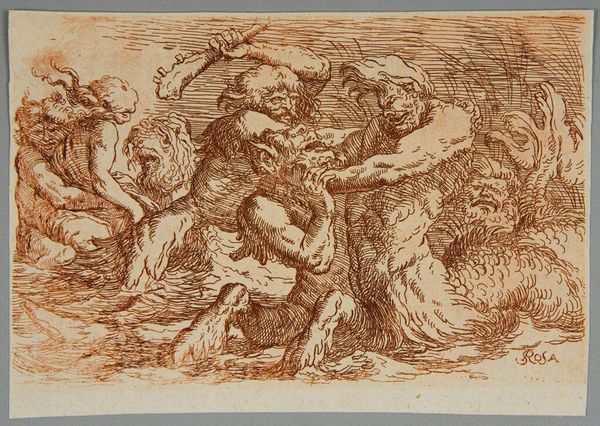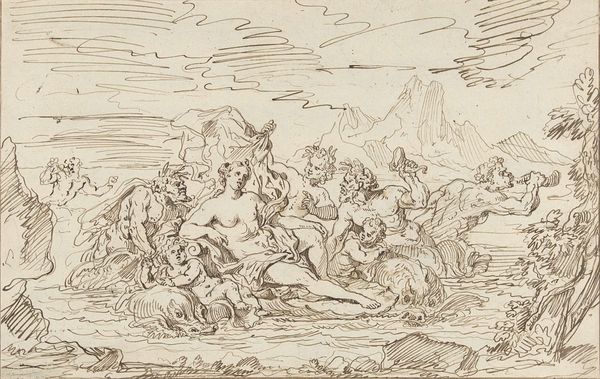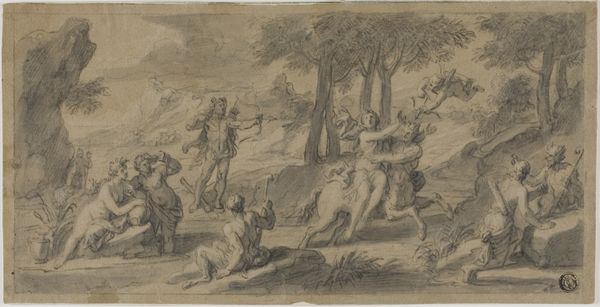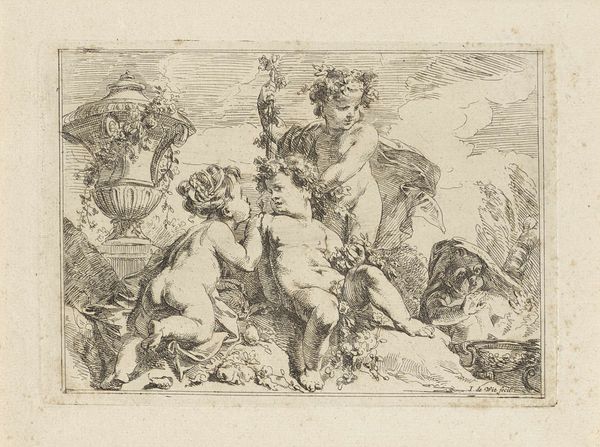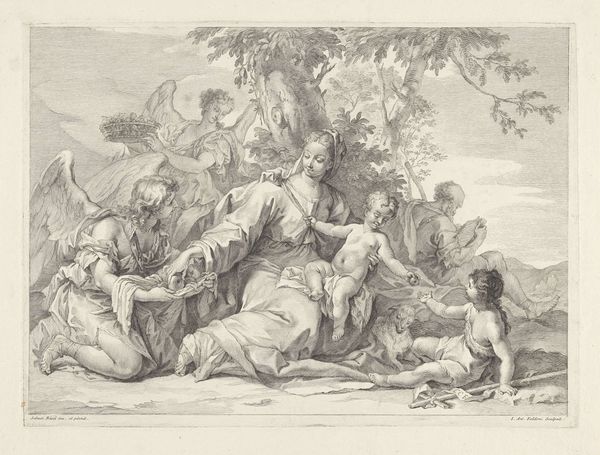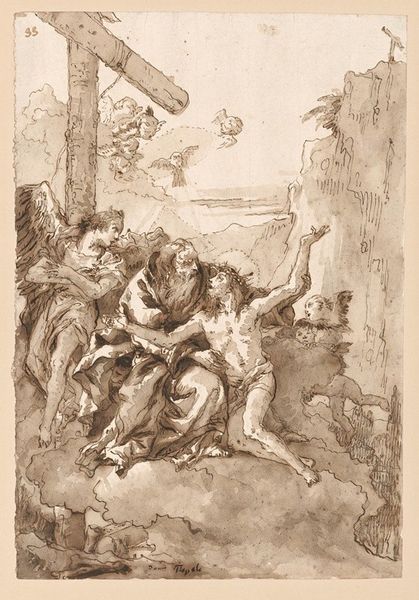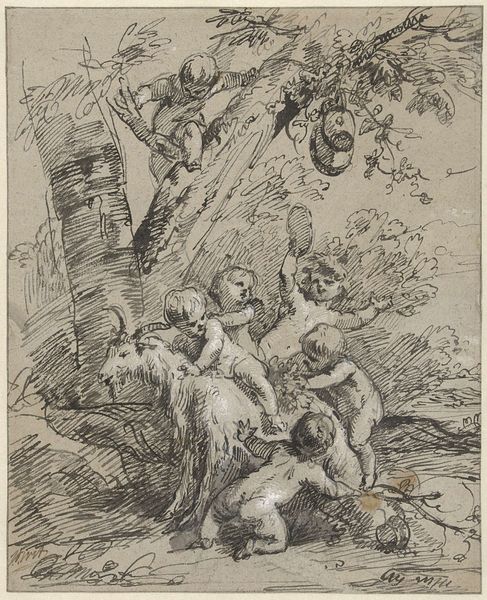
drawing, print, etching
#
drawing
#
baroque
# print
#
etching
#
charcoal drawing
#
figuration
#
female-nude
#
history-painting
#
male-nude
Dimensions: sheet: 6 3/4 x 9 15/16 in. (17.2 x 25.2 cm)
Copyright: Public Domain
Louis Félix de La Rue made this print, "Bacchanal," in the 18th century using etching, a printmaking technique with a long history. The process begins with a metal plate covered in a waxy, acid-resistant layer. The artist then scratches into this coating with a needle, exposing the metal. The plate is then submerged in acid, which bites into the exposed lines. The longer the plate stays in the acid, the deeper the lines will be, and the darker they will appear when printed. After the etching is done, the plate is inked, wiped clean, and then pressed onto paper, transferring the image. The etched line, as you can see here, has a unique quality: it can vary in thickness and darkness, giving the image a sense of depth and texture. In "Bacchanal," de La Rue uses this to great effect, creating a lively scene filled with revelers. By understanding the labor-intensive process of etching, we can appreciate the skill and time involved in creating this image. It's a great reminder that even seemingly simple prints have a rich history of craft and technique behind them.
Comments
No comments
Be the first to comment and join the conversation on the ultimate creative platform.
